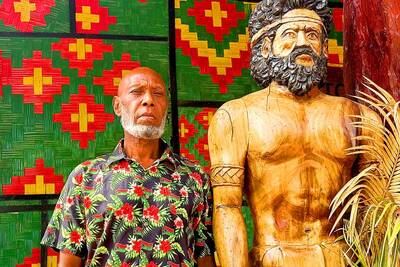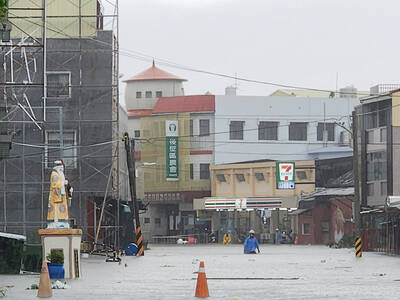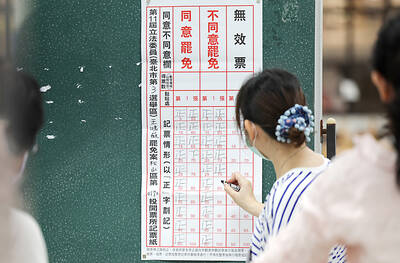Asia’s tourism industry may bounce back from the global financial crisis sooner than other regions, but it is in such a fragile state that another shock could be disastrous, a senior industry official said yesterday.
The Pacific Asia Travel Association, an industry lobby, forecast an average 4.2 percent annual growth in tourist arrivals from this year through to 2011, with a mild recovery showing later this year or early next year.
Tourist arrivals across the region are expected to grow by only 3.5 percent this year, the group said in a report released yesterday.
However, tourist businesses in the Asia-Pacific region were “extremely vulnerable” so that one more shock, such as the scare over the outbreak of SARS, and “the wheels will fall off our industry,” said John Koldowski, the body’s director for strategic intelligence.
Most countries in the region have acted quickly to promote themselves as relatively cheap places to visit and have tried to encourage domestic tourism, the report said.
This strategy proved most successful in South Korea, were arrivals were up by about 25 percent in January and February year-on-year, while Taiwan and India were able to slow the fall in arrivals.
However, numbers were shrinking in China, Thailand and Japan, which was hit hardest with arrivals down 40 percent in February.

The paramount chief of a volcanic island in Vanuatu yesterday said that he was “very impressed” by a UN court’s declaration that countries must tackle climate change. Vanuatu spearheaded the legal case at the International Court of Justice in The Hague, Netherlands, which on Wednesday ruled that countries have a duty to protect against the threat of a warming planet. “I’m very impressed,” George Bumseng, the top chief of the Pacific archipelago’s island of Ambrym, told reporters in the capital, Port Vila. “We have been waiting for this decision for a long time because we have been victims of this climate change for

Rainfall is expected to become more widespread and persistent across central and southern Taiwan over the next few days, with the effects of the weather patterns becoming most prominent between last night and tomorrow, the Central Weather Administration (CWA) said yesterday. Independent meteorologist Daniel Wu (吳德榮) said that based on the latest forecast models of the combination of a low-pressure system and southwesterly winds, rainfall and flooding are expected to continue in central and southern Taiwan from today to Sunday. The CWA also warned of flash floods, thunder and lightning, and strong gusts in these areas, as well as landslides and fallen

MASSIVE LOSS: If the next recall votes also fail, it would signal that the administration of President William Lai would continue to face strong resistance within the legislature The results of recall votes yesterday dealt a blow to the Democratic Progressive Party’s (DPP) efforts to overturn the opposition-controlled legislature, as all 24 Chinese Nationalist Party (KMT) lawmakers survived the recall bids. Backed by President William Lai’s (賴清德) DPP, civic groups led the recall drive, seeking to remove 31 out of 39 KMT lawmakers from the 113-seat legislature, in which the KMT and the Taiwan People’s Party (TPP) together hold a majority with 62 seats, while the DPP holds 51 seats. The scale of the recall elections was unprecedented, with another seven KMT lawmakers facing similar votes on Aug. 23. For a

All 24 lawmakers of the main opposition Chinese Nationalists Party (KMT) on Saturday survived historical nationwide recall elections, ensuring that the KMT along with Taiwan People’s Party (TPP) lawmakers will maintain opposition control of the legislature. Recall votes against all 24 KMT lawmakers as well as Hsinchu Mayor Ann Kao (高虹安) and KMT legislative caucus whip Fu Kun-chi (傅崐萁) failed to pass, according to Central Election Commission (CEC) figures. In only six of the 24 recall votes did the ballots cast in favor of the recall even meet the threshold of 25 percent of eligible voters needed for the recall to pass,